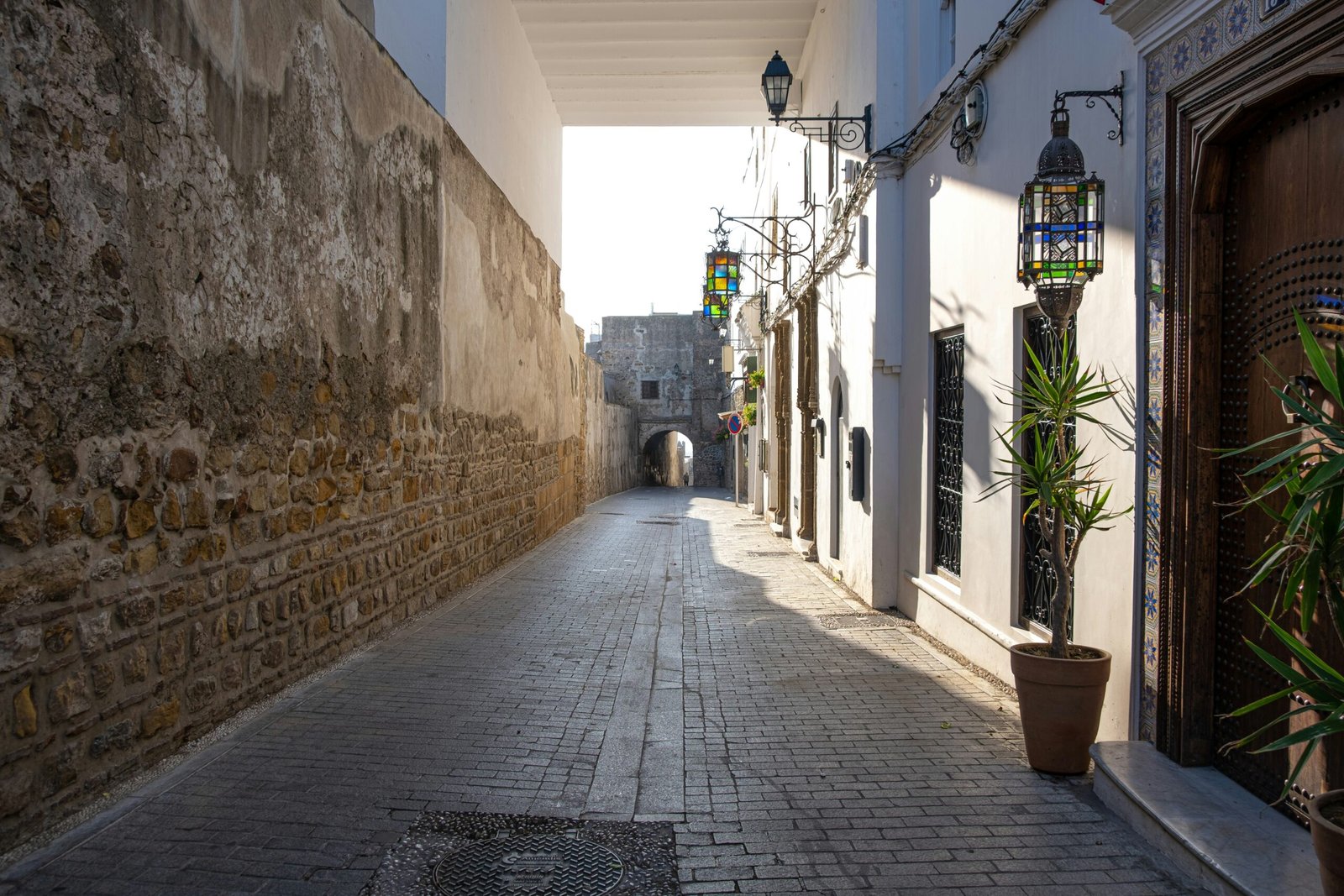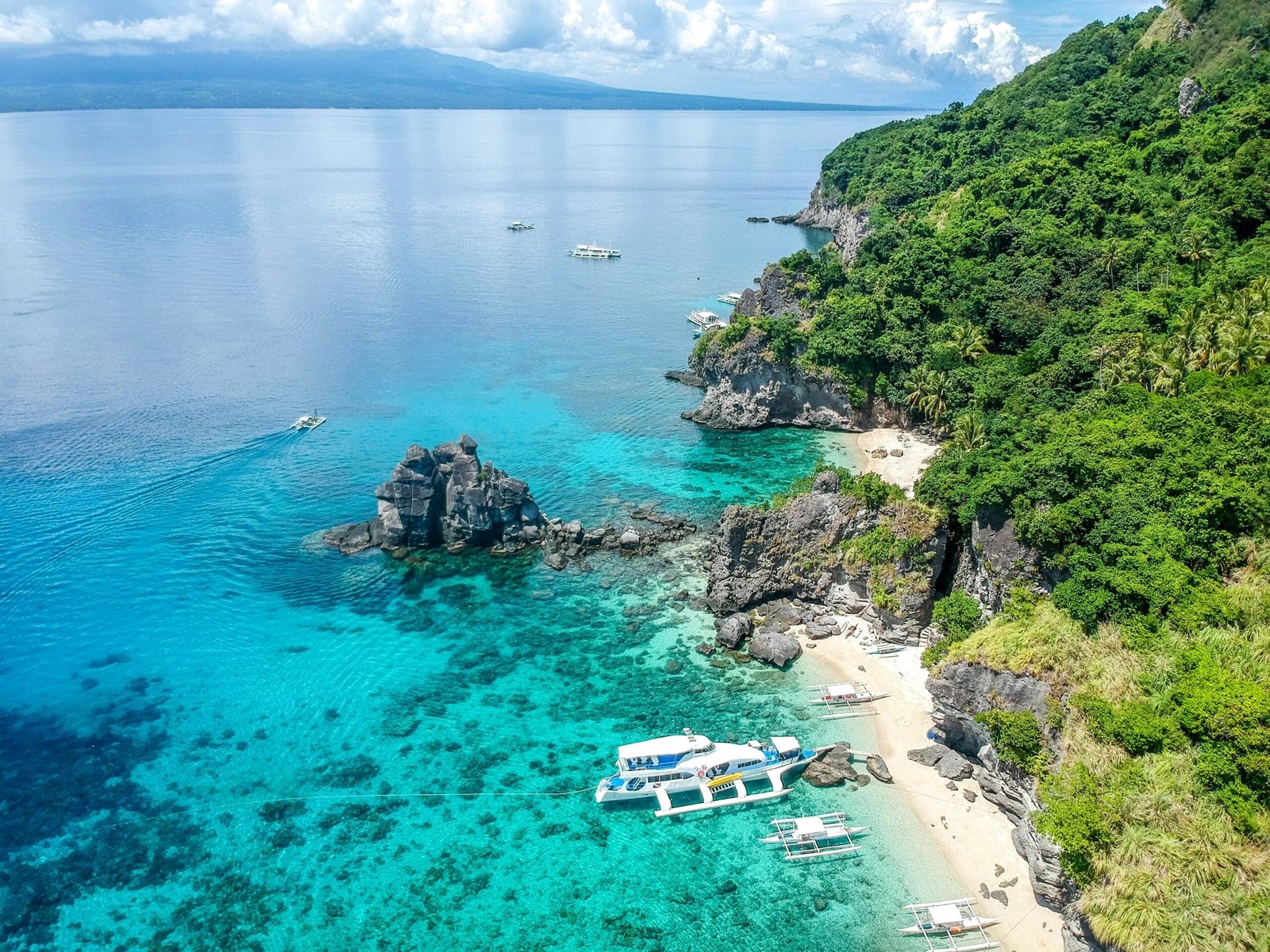Introduction to Historical Travel
Historical travel offers an unparalleled avenue for delving into the past, allowing modern explorers to step directly into the remnants of ancient civilizations. This form of travel transcends mere sightseeing; it immerses individuals in the narratives of bygone eras, providing educational experiences that extend beyond traditional classroom teachings. Visiting archaeological sites and ancient ruins brings to life the profound achievements of human history and culture, fostering a deeper appreciation for our shared heritage.
The allure of historical travel lies in its ability to bridge gaps between epochs, connecting the present with the past. By wandering through the remains of once-great cities, temples, and monuments, travelers gain unique insights into the societal structures, technological advancements, and artistic endeavors that characterized these vanished civilizations. Such explorations not only captivate the imagination but also prompt a reflective understanding of contemporary issues and accomplishments in the context of long-term human development.
The forthcoming sections of this blog post will delve into several remarkable ancient civilizations, each with its own distinctive contributions to human progress. From the sophisticated urban planning of the Mesopotamians to the architectural marvels of the Egyptians, the classical legacies of Greece and Rome, the mysterious culture of the Maya, and the awe-inspiring structures of the Incas, each civilization offers a treasure trove of knowledge and wonderment. By examining these historical societies, readers are invited to embark on a journey through time, uncovering the enduring legacies that continue to shape our world today.
Mesopotamia: The Cradle of Civilization
Often recognized as the birthplace of civilization, Mesopotamia offers a rich tapestry of historical milestones and cultural innovations that have profoundly shaped human history. Nestled between the Tigris and Euphrates rivers, this ancient region, now largely encompassed by modern-day Iraq, saw the rise of some of the earliest and most influential cities, including Ur, Sumer, and Babylon.
The ancient city of Ur is renowned for its impressive ziggurat, a monumental step pyramid that served religious purposes. Ziggurats were not only architectural marvels but also centerpieces of city life, signifying the socio-religious dynamics of the time. Meanwhile, in Sumer, the invention of cuneiform script marked the advent of written language. This pioneering form of communication allowed for the recording of laws, trade transactions, and epic tales such as the “Epic of Gilgamesh.”
Babylon, another pivotal city, is famous for its hanging gardens, one of the Seven Wonders of the Ancient World. Babylonian contributions to astronomy, literature, and law — most notably the Hammurabi Code — laid significant groundwork for future civilizations. These societies were not only foundational in terms of cultural achievements but also practical innovations, such as the wheel, which revolutionized transportation and trade.
For those keen on exploring Mesopotamia’s legacy firsthand, several archaeological sites and museums around the world house extensive collections of artifacts. The British Museum in London and the Louvre in Paris feature compelling Mesopotamian exhibits, including intricate pottery, cuneiform tablets, and elaborately carved stone reliefs. Additionally, the Iraq Museum in Baghdad offers an unparalleled look at relics from various Mesopotamian periods and should not be missed if one’s travels permit.
In visiting these sites and museums, one gains a deeper appreciation of Mesopotamia’s intricate societal fabric and its enduring contributions to modern civilization. Mesopotamia, truly the Cradle of Civilization, continues to captivate scholars and enthusiasts alike with its rich historical legacy and timeless innovations.
Ancient Egypt: The Land of the Pharaohs
Ancient Egypt, often referred to as the cradle of civilization, is a breathtaking testament to humankind’s ingenuity and resilience. This remarkable civilization, flourishing along the fertile banks of the Nile River, left an indelible mark on world history with its unparalleled contributions to architecture, art, and religion. The magnificent pyramids, awe-inspiring temples, and elaborately decorated tombs stand as enduring monuments to the civilization’s grandeur and sophistication.
One of the most iconic features of Ancient Egypt is the construction of the pyramids, particularly those at Giza. The Great Pyramid of Giza, the largest of the three, was erected during the Fourth Dynasty by Pharaoh Khufu and continues to intrigue engineers and historians with its architectural precision and monumental scale. The Sphinx, a colossal limestone statue with the body of a lion and the head of a pharaoh, stands guard over these royal tombs, embodying the enigmatic allure of this ancient civilization.
The Nile River, often considered the lifeline of Egypt, played a central role in the development of this civilization. Its annual floods enriched the soil, enabling the Egyptians to cultivate bountiful crops and sustain a flourishing society. In addition to its agricultural significance, the Nile served as a vital transportation route, facilitating trade and cultural exchanges that bolstered Egypt’s economic and social wealth.
Prominent pharaohs such as Tutankhamun and Ramses II left an enduring legacy through their monumental building projects and significant contributions to Egyptian society. The discovery of Tutankhamun’s tomb in the Valley of the Kings, near Luxor, by Howard Carter in 1922, unveiled a treasure trove of artifacts that provided invaluable insights into the life and death of the boy king. Ramses II, known for his military prowess and extensive construction endeavors, adorned Egypt with grand temples and statues, solidifying his reputation as one of the most powerful and celebrated rulers in Egyptian history.
For modern-day explorers, Ancient Egypt offers a wealth of mesmerizing locations steeped in history. The Pyramids of Giza, the Sphinx, and the Valley of the Kings are just a few of the major touring sites that continue to captivate visitors with their majesty and mystery. These ancient landmarks not only showcase Egypt’s architectural achievements but also reflect the civilization’s deep-seated religious beliefs and cultural practices.
The Indus Valley Civilization: A Forgotten Empire
The Indus Valley Civilization, which flourished around 3300 to 1300 BCE in present-day Pakistan and northwest India, stands as one of the ancient world’s earliest urban cultures. It is revered for its sophisticated urban planning and advanced drainage systems, setting the foundation for future civil engineering and urban living. The cities of Mohenjo-Daro and Harappa, two of the most significant urban centers within this civilization, exemplify these advancements. The layout of these cities reflects a high level of precision and organization, with residential areas meticulously planned along a grid system. Streets were oriented to harness prevailing winds, ensuring efficient air circulation.
One of the most remarkable aspects of the Indus Valley Civilization is its advanced drainage system. Each house in Mohenjo-Daro and Harappa had access to a private bathroom and well, indicating a high standard of cleanliness and public health awareness. The systematic network of drains was constructed with a slope to allow wastewater to flow into larger sewers, which eventually emptied outside the city. This level of planning showcases the engineering prowess and understanding of urban sanitation held by the inhabitants.
Archaeological findings from the Indus Valley have unearthed a wealth of artifacts that provide insights into the culture and daily life of its people. Seals bearing inscriptions of the yet-to-be-deciphered Indus script, intricate jewelry, pottery, and tools reveal a society with a rich cultural and technological heritage. Additionally, the discovery of granaries, standardized weights, and trade seals indicates that the Indus Valley Civilization engaged in extensive trade, possibly with Mesopotamia and ancient Egypt.
Despite its impressive achievements, the decline of the Indus Valley Civilization remains shrouded in mystery. Various hypothesis, including climate change, tectonic activity, and a possible invasion by nomadic tribes, have been proposed by scholars. However, concrete evidence supporting any of these theories is still lacking, leaving the true cause of this ancient civilization’s fall an enigma.
Ancient Greece stands as a cornerstone in the annals of Western culture, offering an enduring legacy through its remarkable contributions to art, philosophy, politics, and science. This ancient civilization’s influence can be seen in various domains, marking a profound yet timeless impact. Central to Greek cultural heritage are the pivotal sites such as the Acropolis in Athens, which features the iconic Parthenon and other classical structures. The Oracle of Delphi, once a revered sanctuary dedicated to the god Apollo, and the ruins of Olympia, the birthplace of the Olympic Games, are quintessential embodiments of ancient Greek ingenuity and religious devotion.
In the realm of philosophy, figures such as Socrates, Plato, and Aristotle laid the foundational stones for Western thought. Socrates’ method of inquiry, characterized by dialogue and critical questioning, remains a fundamental approach in modern philosophical discourse. Plato’s Academy provided a nurturing ground for intellectual pursuit, producing works that would influence centuries of philosophical and scientific endeavors. Aristotle, Plato’s prominent student, made significant strides by categorizing knowledge and advancing empirical research methodologies still foundational in various scientific fields today.
Politically, ancient Greece introduced the concept of democracy, particularly through the Athenian model, by enabling citizens’ participation in governmental affairs. This innovation in civic governance has significantly shaped contemporary democratic systems around the globe. Additionally, Greek art and theater continue to inspire modern aesthetics and dramatic forms. The Amphitheater of Epidaurus epitomizes ancient Greek ingenuity in sound design, still utilized for performances that celebrate classical and contemporary theatrical arts.
To immerse oneself in Greek cultural heritage, many recommend visiting festivals, theaters, and museums. The Athens & Epidaurus Festival offers a plethora of performances that echo the dramatic traditions of ancient Greece. Museums like the Acropolis Museum and the National Archaeological Museum in Athens house vast collections of artifacts, providing a tangible connection to Greece’s illustrious past. Through such explorations, the timeless legacy of ancient Greece continues to inspire and educate, affirming its invaluable role in shaping Western culture.
The Roman Empire: Builders of an Eternal Legacy
The Roman Empire stands as one of the most influential civilizations in history, renowned for its monumental engineering achievements and expansive cultural imprint. The grandeur of Roman architecture is epitomized by iconic structures such as the Colosseum, the Pantheon, and an extensive network of aqueducts, which not only demonstrate the empire’s advanced engineering but also its dedication to functionality and aesthetics.
Colosseum, also known as the Flavian Amphitheater, is an enduring symbol of Roman ingenuity. Capable of seating up to 50,000 spectators, this amphitheater hosted gladiatorial games, animal hunts, and other spectacles that captivated and entertained the populace. The Pantheon, with its magnificent dome and oculus, remains an architectural marvel, influencing building designs for millennia. Aqueducts, such as the Aqua Appia and Aqua Claudia, underscore the Romans’ prowess in hydraulics, efficiently transporting water across vast distances to supply cities and public baths.
Beyond architectural feats, Roman law has profoundly impacted legal systems worldwide. Codified in texts like the Twelve Tables and later expanded upon, these laws established principles of justice, property rights, and citizenship that resonate through contemporary legal frameworks. Daily life in ancient Rome, characterized by complex social hierarchies, bustling markets, and diverse religious practices, offers a rich tapestry of cultural insights. The Forum Romanum, a central hub of political and social activity, serves as a window into the civic life of Romans.
For those eager to explore the remnants of this formidable empire, Italy offers a treasure trove of well-preserved sites. The grandeur of the Colosseum can be experienced firsthand in Rome, while the preserved ruins of Pompeii provide a poignant glimpse into daily life. The aqueducts of Segovia in Spain and the Roman baths in Bath, England, extend the empire’s legacy beyond the Italian peninsula, showcasing Roman engineering and cultural impact across its vast territories. These sites collectively offer a profound connection to the enduring legacy of the Roman Empire.
Mesoamerica: The Mysteries of the Maya and Aztecs
The rich tapestry of Mesoamerican civilizations, particularly the Maya and the Aztecs, presents a captivating chapter in human history. Renowned for their advancements in mathematics, astronomy, and architecture, these cultures have left an indelible mark on the historical landscape. The Maya civilization, flourishing between 2000 BCE and 1500 CE, is exemplary of sophisticated urban planning and astronomical precision. Sites such as Chichen Itza and Tikal stand as monumental testaments to Maya ingenuity, showcasing extensive knowledge in engineering and celestial observations. The Pyramid of Kukulcan at Chichen Itza is celebrated for its precise alignment with the equinoxes, demonstrating the Maya’s deep astronomical acumen.
Similarly, the Aztecs, who dominated central Mexico from the 14th to the 16th century, established Tenochtitlan as a bustling epicenter of elaborate architecture and thriving commerce. The city of Teotihuacan, though predating the Aztecs, was integral to the region’s cultural and economic ecosystem. The pyramids of the Sun and Moon at Teotihuacan not only illustrate the architectural grandeur but also signify the cosmological importance in Aztec and earlier Mesoamerican societies. Through intricate stone carvings, expansive plazas, and temple complexes, these civilizations articulated their religious and cultural narratives.
The encounter with Spanish colonizers in the 16th century marked a tumultuous period, drastically altering the trajectory of the Maya and Aztec civilizations. The ensuing colonial dominance resulted in the suppression and transformation of indigenous traditions, yet the resilience of these cultures endured through clandestine resistance and adaptation. Today, extensive archaeological efforts and renewed scholarly attention aim to preserve and decipher the remnants of these ancient societies. Discoveries continue to unveil the depths of Mesoamerican knowledge, enriching our understanding of their sophisticated worldviews and sustaining their legacies.
The exploration of Maya and Aztec cultures offers invaluable insights into the intricacies of ancient Mesoamerican societies, revealing their profound impacts on historical and scientific paradigms.
Conclusion: The Importance of Preserving Ancient Heritage
As we reflect on the enduring legacies of ancient civilizations, it becomes clear that their preservation is of paramount significance. The ruins and artifacts left behind not only illuminate the remarkable achievements of our ancestors but also serve as irreplaceable educational and cultural resources. By safeguarding these historical treasures, we provide future generations with the opportunity to connect with the past, fostering a deeper understanding of human history and cultural evolution.
Historical travel plays a critical role in promoting cultural appreciation and understanding. When we visit archaeological sites, we are not just spectators of ancient history; we become active participants in the ongoing story of human civilization. These visits can inspire a profound respect for diverse cultures and their contributions to the collective heritage of humanity. Additionally, responsible tourism can significantly contribute to the economic support needed for the conservation of these sites. Awareness and education are key components in this endeavor, urging travelers to recognize their role in preserving these invaluable landmarks.
To support conservation efforts, travelers should adopt responsible tourism practices. This involves adhering to guidelines set by site authorities, such as not removing artifacts, respecting physical barriers, and avoiding activities that may cause damage. Additionally, supporting local conservation initiatives and engaging with community-led projects can have a lasting positive impact. By choosing to visit sustainably certified destinations and contributing to organizations focused on cultural heritage preservation, travelers can help ensure that these ancient marvels endure for generations to come.
The responsibility to protect our shared history is a collective one. By making mindful decisions and advocating for the preservation of historical sites, we honor the legacies of the past and enrich the cultural tapestry of the future. Together, we can ensure that the astounding remnants of ancient civilizations continue to educate and inspire, reminding us all of the profound journey humanity has undertaken through the ages.





